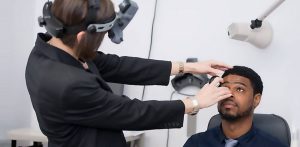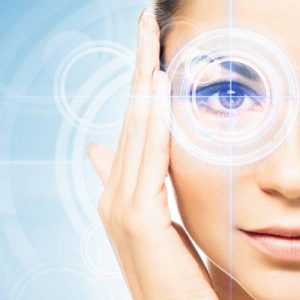Do you often experience dizziness or feel as though the world is spinning around you (vertigo)?
Do you experience motion sickness or a persistent sense of unsteadiness or imbalance?
You may have an inner ear disturbance called Vestibular Dysfunction. The good news is that these symptoms can be treated and you can regain your quality of life.
Vestibular dysfunction is more common than you may realize. A recent epidemiological study estimates that as many as 35 percent of adults over the age of 40 have experienced some form of vestibular dysfunction at some point in their lives.
Additionally, it has been found that 85 percent of dizziness or imbalance symptoms are due to vestibular dysfunction.
What is vestibular dysfunction?
The vestibular system is made up of the peripheral vestibular organ (located in the inner ear), vestibulocochlear nerve, central vestibular organ, and neural connections situated in the brainstem.
When the inner ear sends the wrong information or conflicting signals to the brain, dizziness can occur. As a result, the natural response is to limit movement in order to minimize the rocking or spinning sensation.
What causes vestibular dysfunction?
Vestibular dysfunction is caused by damage to the vestibular system by disease, viral infection, high doses of certain antibiotics, stroke, degeneration of the inner ear’s balance function, blows to the head (such as concussions, brain trauma, whiplash) or some other unspecified cause(s). This results in a series of symptoms that impact all aspects of daily living.
If the system is damaged, vestibular disorders can result in one or more of these symptoms:
- Dizziness and vertigo
- Imbalance and spatial disorientation
- Cognitive and psychological changes
- Hearing changes
- Vision disturbance
In addition, concentration, memory loss and fatigue can often accompany vestibular dysfunction. In order to keep the body upright, the brain needs to work extra hard and therefore compromises other brain functions. Some people with vestibular dysfunction find it difficult to get out of bed, function properly at school or work, or perform routine tasks in environments heavy in visual stimuli (i.e. grocery stores, traffic, shopping malls). Thankfully, by undergoing vestibular rehabilitation therapy, these symptoms disappear along with the dizziness.
How is vestibular dysfunction diagnosed?
Inner-ear problems cause diverse symptoms such as vertigo, nausea and blurred vision. Therefore, people with vestibular dysfunction spend years going from physician to physician, only to have their symptoms misdiagnosed as sinus, neurological or even psychological problems.
Many causes of dizziness could be detected through a comprehensive eye exam.
Neuro-optometrists specialize in understanding how specific visual dysfunctions relate to a patient’s symptoms and performance.
During a comprehensive eye exam, a neuro-optometrist will evaluate many functions of the visual system, such as:
- How well the eyes work together
- Whether the eyes are struggling to focus
- Eye scanning and tracking ability
- How the patient processes his/her surroundings and moves through it
- The connection between vision and balance
- Complex visual perceptual ability (how one organizes and interprets visual information and associates meaning and visual memory to it)
- Visual acuity, refraction, eye health evaluation, and peripheral vision testing
If you have been diagnosed with vestibular dysfunction contact an eye doctor near you that specializes in vision therapy to help treat your vestibular dysfunction.
SEE RELATED: Vision, Dizziness and Imbalance
What is neuro-optometric vision therapy?
Neuro-optometric vision therapy retrains the eye-brain connection to improve visual problems due to vestibular dysfunction.
This type of vision therapy works by using a variety of methods and techniques to help both eyes to work as a team to enable accurate binocular vision.
Neuro-optometric vision therapy is an individualized program, designed to meet the specific needs of each patient. The therapy program incorporates in-office and at-home exercises for remediation and management of visual problems.
Neuro-optometric vision therapy has been proven effective for patients of all ages— with over 80 percent success rate for reducing or resolving symptoms associated with vestibular dysfunction.
A multidisciplinary approach
Vestibular dysfunction often requires a multidisciplinary approach. In addition to neuro-optometrists, the rehabilitation team may include neurologists, rehab physicians, nurses, physical and occupational therapists, speech-language pathologists, neuropsychologists, and audiologists.
LEARN MORE: Guide to Vision Therapy for Adults
If you or a loved one presents symptoms of vestibular dysfunction, schedule an appointment with a neuro-optometrist for a comprehensive eye exam.
A neuro-optometric vision therapy program will reduce your symptoms, and improve your quality of life.










